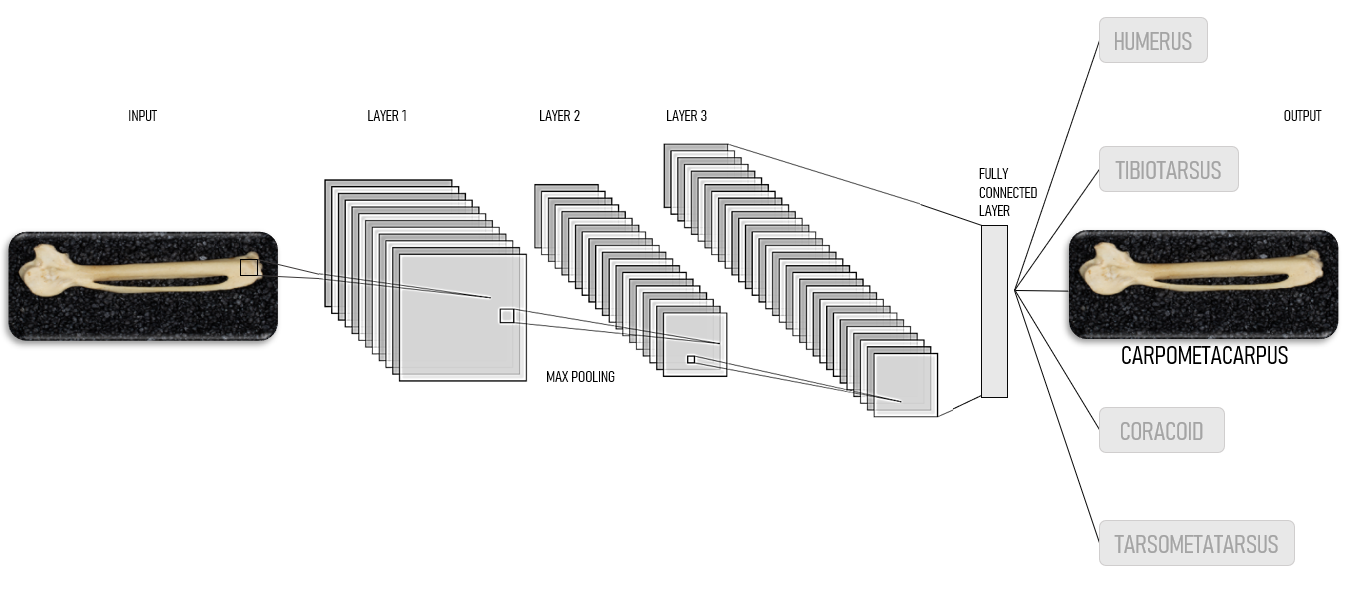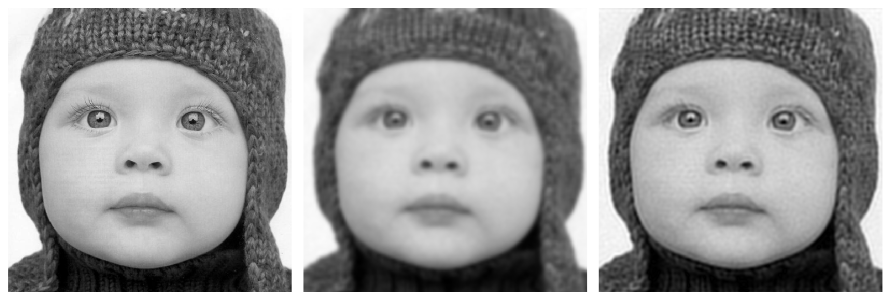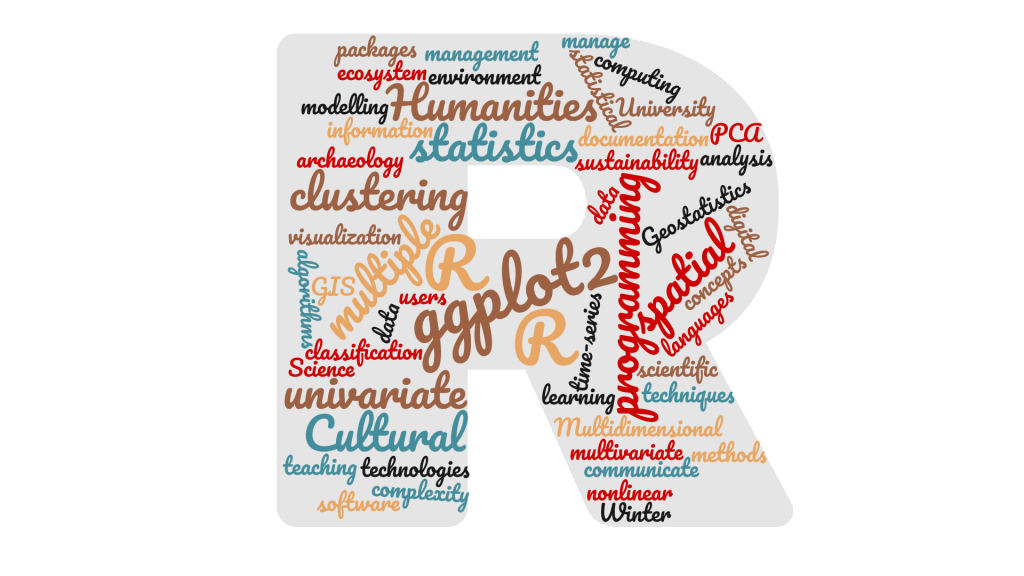Introduction
Artificial Intelligence (AI) techniques have become increasingly useful tools in many fields, such as medicine, economy, environmental sciences and gaming. Over the last ten years, AI-based methods have also been explored in archaeology (GUALANDI et al., 2021) and, currently, numerous projects aim to assist archaeologists by using such methods (BICKLER, 2021; MANTOVAN & NANNI, 2020). AI techniques in archaeology mainly support repetitive activities that require a large amount of time, such as the cataloguing of finds, use-wear analysis on osteological material, or unsafe activities for humans, such as the investigation of underwater sites located at high depths.
This article is based on Elisa Paperini‘s master thesis, “Artificial Intelligence and Archaeozoology: the use of neural networks for the classification of avifauna finds”, with supervisors prof. Gattiglia (University of Pisa), Dr. Sciuto (University of Pisa), Dr. Dubbini (Miningful) and prof. Demarchi (University of Turin). This is a joint research with experts from different disciplines (archaeozoology, archaeology, mathematics, computer science), and its aim is to use neural networks to support archaeozoologists in classifying avifauna finds and offer to non-specialist archaeologists a tool providing an immediate indication of the finds identity. The study of faunal remains provides important information about the surrounding environment, such as the seasonality at the time of deposition and the relationships between humans and other animal species (DINCAUZE, 2010).
The dataset used consists of 1833 photographs of 5 bone types (fig. 1), belonging to 25 different species of ducks and 5 other species of birds. The osteological remains come from reference collections in the Zoological Museum of Copenhagen (Denmark) and the Natural History Museum of Tring (England). They were studied and photographed by zoo archaeologist Lisa Yeomans. Two convolutional neural networks were implemented, one for the classification of the bone typology and one for the recognition of the bird species. The bone type classification achieved 86% accuracy, and the bird species identification (30 classes) achieved top-5 accuracy of 47%.
Figure 1. Types of bones present in the dataset. Bones are not shown to scale.
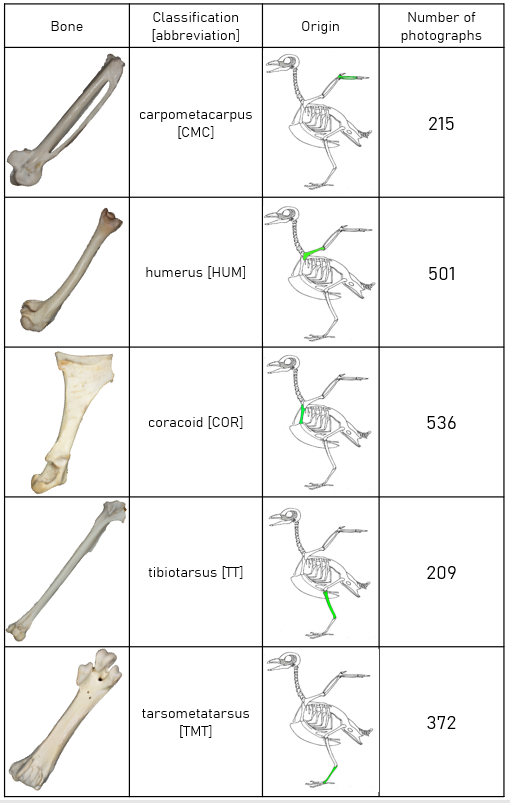
Tools and methods
The training set contained 70% of the photographs, the validation set the 20% of the photographs and the test set the 10% of the photographs. Code development took place on Google Colaboratory (Colab), using Python and PyTorch machine learning framework.
Convolutional neural networks were used, because they are particularly appropriate for image processing (LINDSAY, 2021). Two distinct projects were created, one for bone type classification the other for the classification of bird species. The datasets for both projects were uploaded to the institutional Google Drive account and virtually linked to the Colab workspace via the GDFuse interface.
For species recognition, due to the difficulty of the problem, combined with the limited sample size, it was decided to get a list of the five predictions with the highest confidence scores (top 5). This allows archaeozoologists to decide which of the five proposed classes is the correct one, maintaining the making-decision power. At the same time, it encourages critical observation by non-specialised archaeologists.
Results
The neural network that classifies the osteological remains based on the typological classes achieves an accuracy rate of 86% on the validation set (see Figure 2).
The results on the test set are even more promising: the algorithm achieved an accuracy of 94% out of 183 components examined. The coracoid was the most accurately classified class, with 100% accuracy on 53 pictures. The tarsometatarsus is the most misclassified class, with 19 bones out of 26 correctly classified. Six times out of seven, the tarsometatarsus was mistakenly identified as coracoid.
Figure 2. Representation of loss and accuracy functions obtained from neural network training for bone type classification. On the left, the training loss (blue) and validation loss (orange); on the right, the training accuracy (blue) and the validation accuracy (orange).

The neural network for species classification of faunal remains reached 47% accuracy (top-5, see figure 3).
Figure 3. Representation of the top-5 loss and accuracy obtained from training the neural network for the classification of the duck species. On the left, the training loss (blue) and validation loss (orange). On the right, the top-5 training accuracy (green) and the top-5 validation accuracy (red).
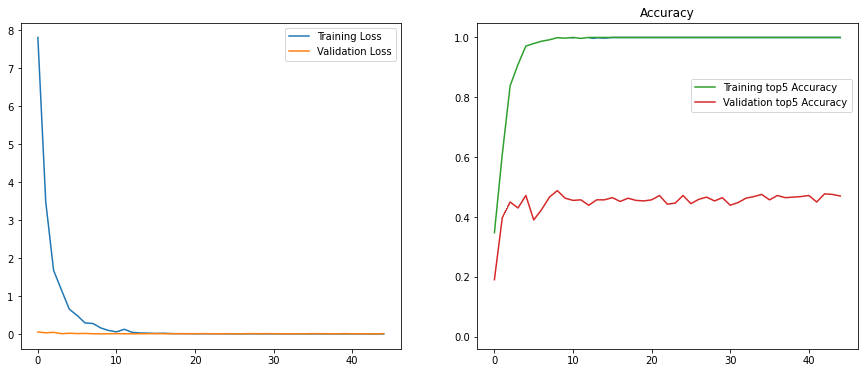
The achieved results represent a valid starting point. To obtain more accurate results, it is possible to improve the two neural networks by managing the data imbalance by reorganising the training-validation-test split of the dataset; by optimising hyperparameters; by using transfer learning and fine-tuning techniques. An interesting application could concern the classification of faunal finds that are difficult for archaeozoologists to identify, such as, for example, the distinction between male or female bone specimens. In archaeology, this distinction is important to define the relationship between human beings and animals both in terms of cultural aspects (different deities could correspond to sacrifices of animals distinguished also by sex) and in terms of food and hunting habits. The developed neural networks can be trained to recognise additional species of birds or other families and categories of animals, such as insects, molluscs and snakes, providing valuable information about the climate and environmental characteristics at the time of deposition.
References
- BICKLER, S. (2021). Machine Learning Arrives in Archaeology. Advances in Archaeological Practice, 9(2), 186-191. https://doi.org/10.1017/aap.2021.6.
- DINCAUZE, D. (2000). FAUNA. In Environmental Archaeology: Principles and Practice (pp. 409-494). Cambridge University Press. https://doi.org/10.1017/CBO9780511607837.
- GUALANDI, M.L., GATTIGLIA, G., & ANICHINI, F. (2021). An Open System for Collection and Automatic Recognition of Pottery through Neural Network Algorithms. Heritage, 4, 140-159. https://doi.org/10.3390/heritage4010008.
- MANTOVAN, L., & NANNI, L. (2020). The Computerization of Archaeology: Survey on Artificial Intelligence Techniques. SN Computer Science, 1. https://doi.org/10.1007/s42979-020-00286-w.
- LINDSAY, G.W. (2021). Convolutional Neural Networks as a Model of the Visual System: Past, Present, and Future. Journal of cognitive neuroscience, 33(10), 2017-2031. https://doi.org/10.1162/jocn_a_01544.

